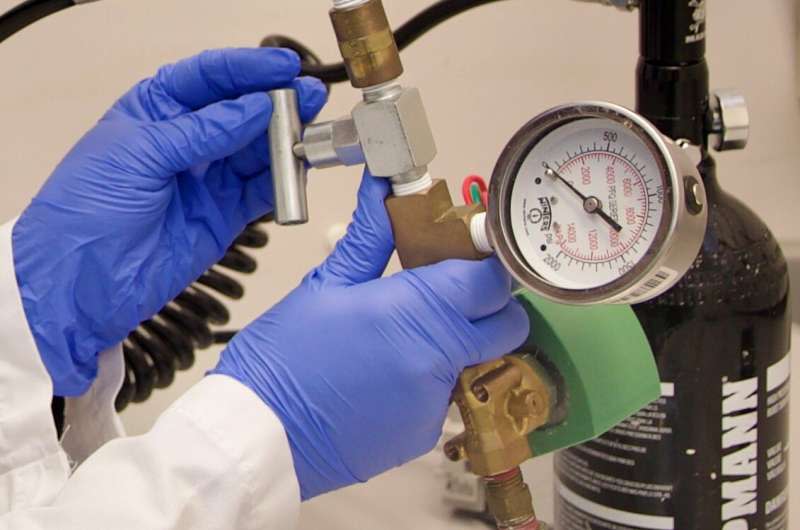Vaccines 'could be delivered in a puff of air instead of a needle'

Good news for anyone who’s uneasy around needles - vaccines could soon be delivered without using a sharp instrument at all.
A new gadget called the MOF-Jet can ‘shoot’ medicines through the skin directly into cells, without the use of needles.
The invention could lead to new treatments for cancers such as melanoma, the researchers suggest.
It uses powdered vaccines which don’t need to be refrigerated, and compressed air, according to researchers at The University of Texas at Dallas.
The researchers say that being inoculated by the MOF-Jet is similar to being hit in the arm with a Nerf bullet.
The researchers are presenting their results at the spring meeting of the American Chemical Society (ACS).
Read more: Coronavirus shows us how the planet’s health is linked to our own
Lead researcher Jeremiah Gassensmith, Ph.D ordered parts for a compressed gas-powered jet injection system to mess around with while stuck at home.
He handed the pieces over to Yalini Wijesundara, a graduate student, with the instructions, "See what you can do with this."
Wijesundara, had previously researched other jet injectors dating back to the 1960s that use compressed gas to inject a narrow stream of fluid.
If the injectors could be modified to fire solids, she figured, they could deliver cargo encased in metal-organic frameworks, or MOFs, as well.
By combining the jet injector with the lab's existing work on MOFs, Wijesundara created a "MOF-Jet."
The jet can deliver powders to cells by shooting them in with air.
Read more: Nature crisis - new global extinction target agreed
Jet injectors previously saw widespread use in the military, but they were painful and the fluid often splashed back, potentially spreading other diseases such as Hepatitis B.
A modern-day descendant is the "gene gun," which is typically used in veterinary medicine and can cost tens of thousands of dollars.
These devices also shoot biological cargo into cells. In this case, the cargo is attached to the surface of a metal microparticle, typically made of gold or tungsten.
But once it penetrates the skin, the metal particles remain there and can speed up the degradation of the biological material.
A different strategy would be to put the cargo inside a MOF. Gassensmith's group previously worked with the MOF called zeolitic-imidazolate framework eight, or ZIF-8. "
Compared to gold, it's cheap and protects biological materials, such as nucleic acids," explains Wijesundara.
"We can also store vaccine formulations within it as powders at room temperature, which eliminates the need for the extremely cold temperatures many liquid vaccines require."
The team encased a variety of biological materials within ZIF-8. They tested their system and showed that the MOF-Jet delivered a ZIF-8-encased gene to onion cells and a ZIF-8-encased protein to mice.
The blast from the injector just feels "like you got hit with a Nerf bullet"—much less painful than being stuck with a needle.
"If you shoot it with carbon dioxide, it will release its cargo faster within cells; if you use regular air, it will take four or five days," she explains.
This means that the same drug could be released over different timescales without changing its formulation.
The team is now using this method to deliver chemotherapeutics as a potential treatment for melanoma, the most serious form of skin cancer.
They say that because the MOF-Jet can disperse material over a wide area, it could distribute a cancer therapeutic into a melanoma more evenly than with a needle, which is the current delivery method.
Watch: Drones to be used for vaccine delivery


